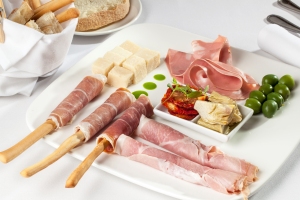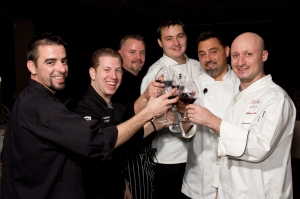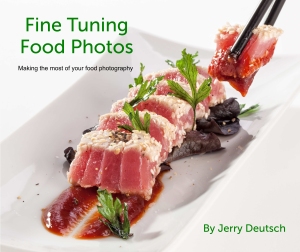Many of my clients are entrepreneurs and have never been to a professional photo shoot before. So, I thought that I would write a few blog posts on what happens before, during and after a photo shoot as a guide for the newbies. Here is part 2…
Whether your creative team is just your photographer or if you have an ad agency, web designer or print designer, communication is key. Your photographer needs to fully understand your needs before the shoot. You and your creative team should communicate well in advance of the shoot.
So, what information will you discuss?
- Whether the images will be used for print or Internet is something that is important for the photographer to know – the color space (some technical mumbo jumbo) for the Internet (RGB) and the color space for package printing (CMYK) are very different.
- Whether you need squares, horizontals or verticals
- The look and feel (clean white background, rustic look, formal setting etc.) Use examples from the Internet.
- The type of background
- The type of surface
- Prop selection
- Will you use flavor cues
- Is there a need for a food stylist or a prop stylist.
…and many other questions need to be discussed before the shoot. Have a Pre-Production meeting, either face-to-face, by phone or even by e-mail if necessary, before your shoot. Prepare a shot list – a list of all the products and the photos you need of them. Once you’ve had your pre-pro (pre-production) discussions with the photographer, stylist, art director and/or designer you are now ready for the shoot. Now, it is up to you to bring the product to the photographer’s studio.
A term that you will probably hear in the studio is “Hero”. The hero refers to the product that looks so good, that it’s the one that is used in the final image. Before the hero is put on set, the photographer will often work with a stand-in, to get the background, camera angle, lens selection and lighting right.
If you are photographing packaging such as bottles with labels, hand pick the best ones. The labeling process often puts labels on crooked or scratches them. The bottle has a seam. Try to get bottles where the seam is on the side rather than in the front. If possible, bring extra labels so they can be put on the bottles by hand. If you have a bottle with a clear liquid in it, such as liquor, the back label will have to be removed. Check the printing on boxes and bring perfect ones. Check the corners of boxes to make sure they are not bent.
If you are selling a baked product that is frozen, try to get it before it is frozen…immediately before the shoot. Hand pick the best and treat them as if they are very fragile. Keep them separated from one another so they don’t collide during transport.
If you are using food in a recipe, you need to start with the best ingredients to end up with the best hero. I feel that the best way to do this is pay the stylist to shop for you. They know where to get the heroes and what to look for.
So, how should you prepare for the photo shoot? Have lots of stuff…I mean lots! Especially, if it’s food. The photographer or stylist is going to go through all of your products to pick the best ones (or the best pieces of several of them and put them back together to make it look awesome.) Don’t run out of product and have to compromise. Make sure that your heroes are as good as they can possibly be. Product is the least expensive part of a photo shoot so have lots more than you need.

 March weather comes in like a lion and out like a lamb and it looks like this year is no exception. March is a month of transition. We all know about college basketball and “March Madness”. But, what I want to know is why there is “March Madness” in the photo industry as well?
March weather comes in like a lion and out like a lamb and it looks like this year is no exception. March is a month of transition. We all know about college basketball and “March Madness”. But, what I want to know is why there is “March Madness” in the photo industry as well?
 So, how do these two stories meet? Chef Michael decided that he wanted to cook a Peruvian meal for us. What a coincidence, he didn’t know that we were on our way to Peru 10 days later. Well, this was some outstanding dinner.
So, how do these two stories meet? Chef Michael decided that he wanted to cook a Peruvian meal for us. What a coincidence, he didn’t know that we were on our way to Peru 10 days later. Well, this was some outstanding dinner. We had a drink called Chicha morada from purple Peruvian corn and the rind
We had a drink called Chicha morada from purple Peruvian corn and the rind  from the pineapple, apple cinnamon, cloves and sugar. It was boiled to extract the flavors and then cooled and filled with pineapple pieces. IT WAS AWESOME!
from the pineapple, apple cinnamon, cloves and sugar. It was boiled to extract the flavors and then cooled and filled with pineapple pieces. IT WAS AWESOME! w members of our group (including me) don’t like hot spices.
w members of our group (including me) don’t like hot spices.
 cilantro, Concha (which is a cooked, large kernel corn) onions, tomatoes and lots of goodness. This was definitely the best shrimp dish I have ever eaten
cilantro, Concha (which is a cooked, large kernel corn) onions, tomatoes and lots of goodness. This was definitely the best shrimp dish I have ever eaten Our meat course was Lomo. The hanger steak was cooked to perfection. It was served with plantains, Concha, tomatoes, potatoes, and onions…lots of red onions.
Our meat course was Lomo. The hanger steak was cooked to perfection. It was served with plantains, Concha, tomatoes, potatoes, and onions…lots of red onions.

 This will enable me to offer a professional food photography shoot for less than 1/3 the cost. That could include plated dishes, head shots of the chef or even the room itself.
This will enable me to offer a professional food photography shoot for less than 1/3 the cost. That could include plated dishes, head shots of the chef or even the room itself. That was easy. Now, how do I accomplish it? Here is where the work begins. I am going to get online and get the names and addresses of all of the restaurants in central New Jersey and let them know about this great offer.
That was easy. Now, how do I accomplish it? Here is where the work begins. I am going to get online and get the names and addresses of all of the restaurants in central New Jersey and let them know about this great offer. So, if you know a central New Jersey restauranteur, send them a link to this post. If you are a central New Jersey restauranteur, then visit my website at
So, if you know a central New Jersey restauranteur, send them a link to this post. If you are a central New Jersey restauranteur, then visit my website at 
 day is National Chocolate Day. Whether it’s milk, dark or even white, I wish you the chocolate of your dreams.
day is National Chocolate Day. Whether it’s milk, dark or even white, I wish you the chocolate of your dreams. 
 So, what does all this have to do with my photography career. I’ve always felt that it was a punishment that my biggest clients all have to do with chocolate. I work for two chocolate manufacturers and two baking companies. I am surrounded by chocolate and some of what we don’t shoot sits in my pantry…taunting me.
So, what does all this have to do with my photography career. I’ve always felt that it was a punishment that my biggest clients all have to do with chocolate. I work for two chocolate manufacturers and two baking companies. I am surrounded by chocolate and some of what we don’t shoot sits in my pantry…taunting me. 








